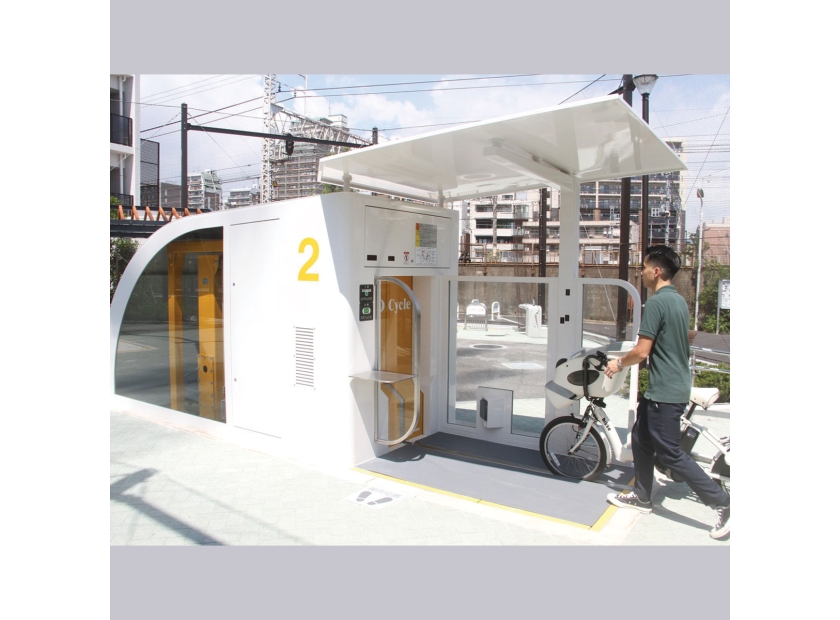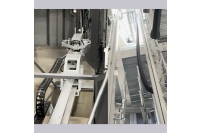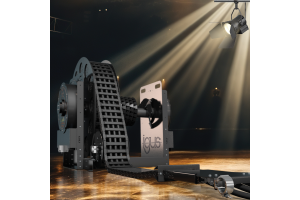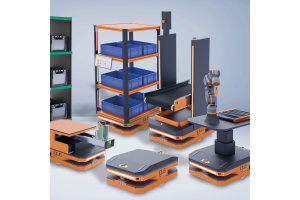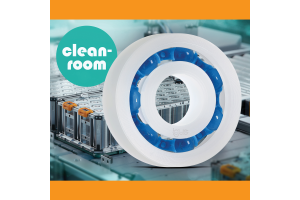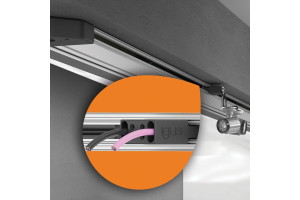When the robot parks the bike
When the robot parks the bike
Japanese manufacturer Giken realises automated, underground parking system with energy chains from igus
Bikes instead of cars: for the mobility transition to work, cities need more parking facilities without encroaching too much impact on the cityscape. For this purpose, the Japanese manufacturer Giken has built a garage called Eco Cycle, which parks bicycles completely automatically underground. To ensure the reliability of the robot garage, the engineers used robust and maintenance-free energy chains from igus for the lift's cable guidance system.
Sunday noon, 30°C, the sun is shining: the perfect opportunity to take a leisurely bike ride into town and enjoy an ice cream. Once there, the nasty surprise: all bicycle stands are in use. The alternative of leaving the bike on the pavement turns out to be a fatal mistake. One ice cream later and the bike has been stolen. This problem affects thousands of cyclists in Germany as bicycle stands are in short supply. However, there is a solution that is currently being realised in Japan: an underground garage called Eco Cycle from Giken, a technology manufacturer from Tokyo with almost 700 employees. It is a huge robotic system that is fully automated. Cyclists do not have to go into dark areas, but can leave their bikes above ground at a collection point that looks like the entrance to a lift. Another advantage: the cityscape remains virtually unchanged.
Robot parks bicycles fully automatically in an underground space
And this is how the futuristic garage works, which is now located in 63 locations in 26 cities in Japan and may also be seen in Germany at some point: the cyclists place their bike on a rail on the ground at the registration point for contact-free check-in via card scanner. Then the spectacle begins. A door opens and a gripper at ground level pulls the bike over the rail into the car-sized station. The bike is now standing on top of a mobile platform that can travel up to 16m downwards and rotate 360°. This lift is enclosed by round walls to which 200 rail-shaped bicycle racks are attached at regular intervals. The diameter of this room amounts to 8.5m. What happens next looks like something out of a science fiction film. The lift descends, stops at the level of a free space and turns in the right direction. A telescopic mechanism then pushes the bike onto the bike rack. The parking process takes an average of 13 seconds.
Reliability in automation: energy chains from igus protect lift cables and withstand 4.5 million operating cycles
Sufficient parking space, virtually no change to the cityscape and a robot that takes care of the parking: this level of automation has many advantages, but also a potential downside: people are dependent on the reliability of the machine. If a lift malfunctions, for example due to a faulty control cable, 200 annoyed cyclists would have to walk home. Giken therefore relies on igus energy chains made of high-performance plastic from the E4.42 and 1400 series. They ensure that the energy and data cables of the parking system follow the horizontal and vertical movements in the lifting and telescopic shafts in a controlled way. "The energy chains protect the lift's electrical cables from mechanical damage and external influences, which is essential for the reliable operation of the entire system," says Jörg Ottersbach, Head of the e-chain Business Unit at igus. The e-chains are easy to install and maintain, which increases the system's cost-effectiveness. They are also extremely robust and durable. "Our energy chains are designed to achieve the long service life required by Giken - up to 4.5 million operating cycles at high speeds and accelerations without any problems." The lifting axis of the lift operates at a speed of 3m/s and an acceleration of 3m/s2, the telescopic axis even at 4m/s2with a stroke of 2.6m. "The use of our energy chains made of high-performance plastic helps increase operational safety and the efficiency of the Eco Cycle bicycle garages," says Ottersbach.

